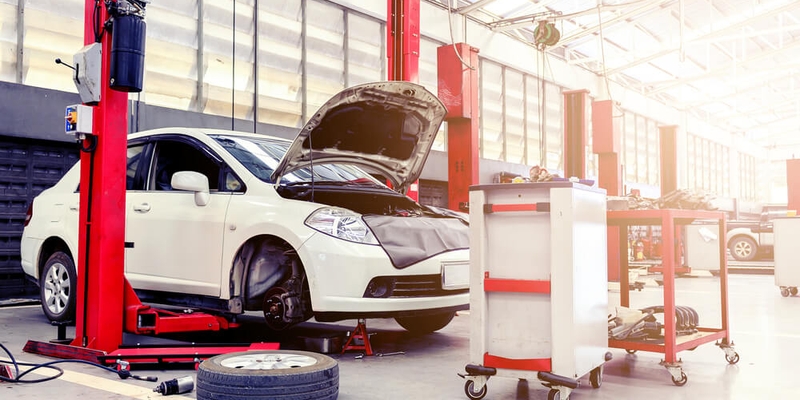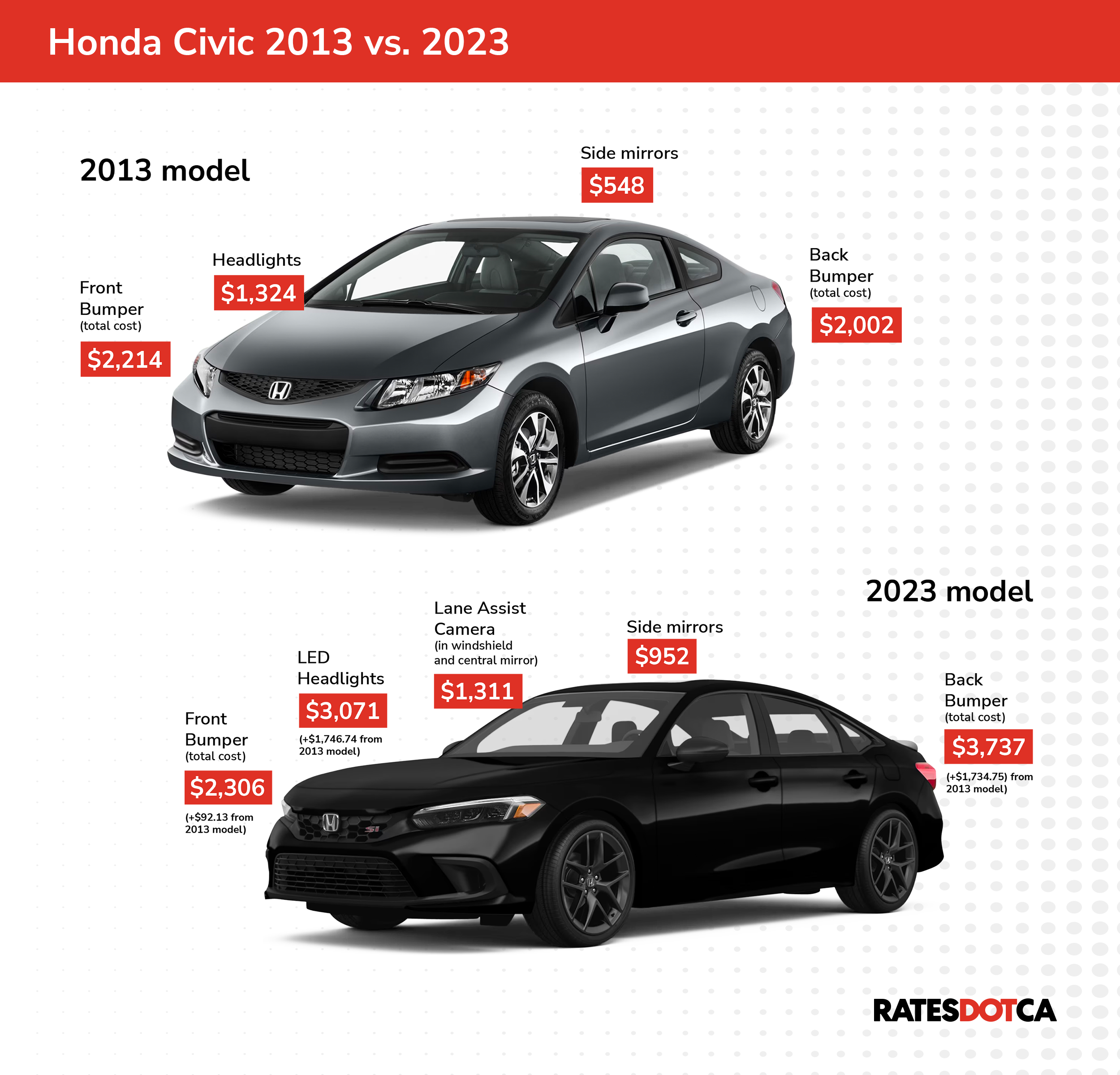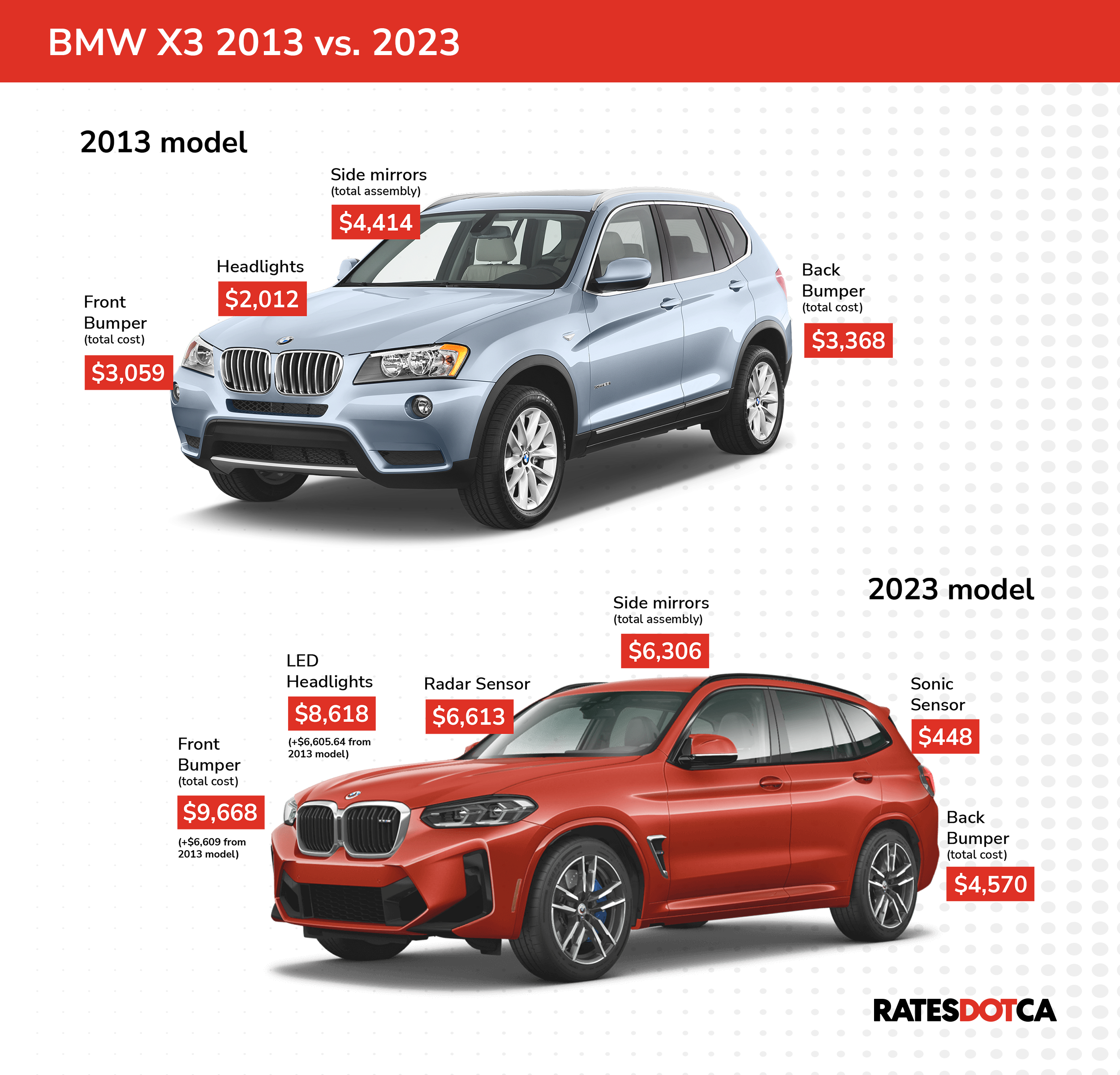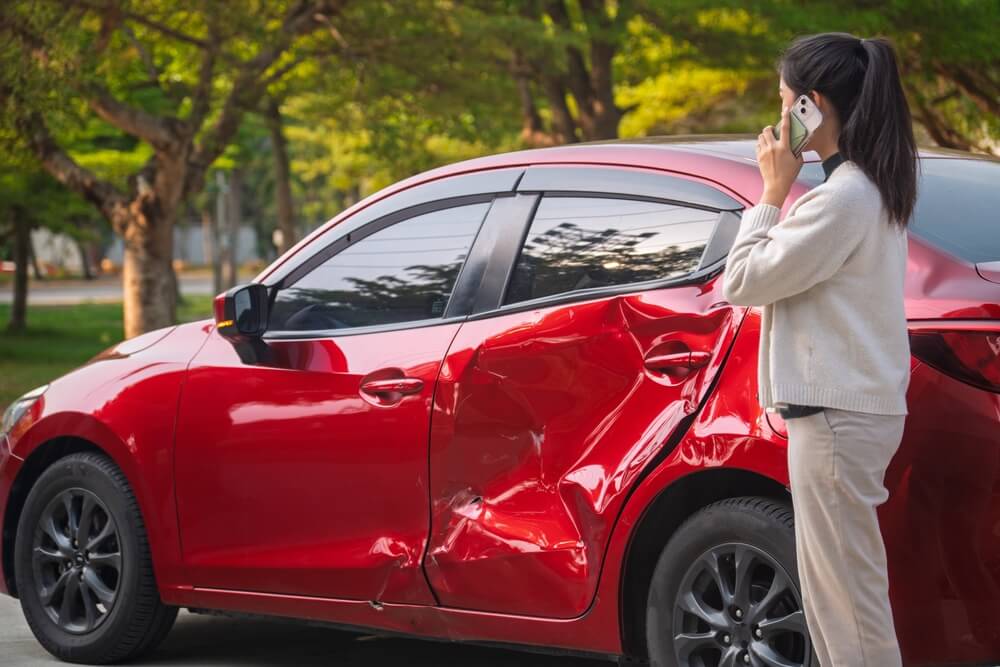
If you are not redirected within 30 seconds, please click here to continue.
Samedi: 10h – 16h HAE

If you are not redirected within 30 seconds, please click here to continue.
If you are not redirected within 30 seconds, please click here to continue.
Why your new car's headlights cost $6,500 more than your old car's headlights

Modern vehicles have become increasingly sophisticated. They’re equipped with snazzy new high-tech features such as collision avoidance systems, which are designed to reduce the frequency of accidents. Consequently, however, on the off chance that these technologies do require repairs, the cost can be two to three times higher than what you would've paid for the same job on a similar model a decade ago.
We examined two long-running vehicle models in Canada and compared them with their 2013 versions. The cars were the Honda Civic, which has been the country’s top-selling car for 24 years in a row, and the BMW X3, a popular SUV that also falls into the luxury car category. On average, the repair cost for newer vehicles is 23 per cent higher than the same type of repair on their previous counterparts.
This comparison aims to illustrate the range of repair costs associated with popular and luxury models.
Related: Nearly 70% of Canadians consider repair and replacement costs when buying a vehicle
The cost of Honda Civic parts
Over the past decade, the Honda Civic has undergone significant changes that have impacted not only its purchase price but also the cost of repairs and maintenance. In 2013, the Honda Civic was already a popular choice due to its reliability and cost-effectiveness. Fast forward to 2023, the Civic has seen advancements in technology, safety features, and fuel efficiency.

Digging deeper into the Honda Civic parts, we found price increases of up to thousands of dollars more for the newer model compared to their 2013 version. Some of these increased costs were due to updated safety standards, higher-tech features, and longer-lasting components. They include:
Windshield and central mirror: The 2023 model’s windshield and central mirror are equipped with a new ’lane-assist camera’ feature. This advanced technology significantly improves the safety and convenience of the vehicle, aiding in lane-keeping and reducing the risk of lane departure accidents. However, this addition also leads to a price increase of $1,360.59 over its 2013 version.
Headlight assembly: The headlamp assembly has seen a major upgrade from the 2013 to the 2023 model. The 2013 model used a halogen bulb, a standard technology in vehicles for decades. However, the 2023 Honda Civic now uses LEDs to light the path ahead. LED lights are known for their longevity, energy efficiency, and superior illumination. However, this switch to LED results in a significant price increase of $1,746.74.
The improvements in the 2023 model contribute to a safer and more comfortable driving experience. However, they also lead to higher repair costs. It’s important for car owners to consider these factors when purchasing a new vehicle or budgeting for potential repairs.
The cost of BMW X3 parts
Just like with the Honda Civic, the luxury BMW X3 has evolved significantly over the past ten years. Not only has it added more safety and efficiency features, BMW also introduced a new 48-volt system and rolled out a plug-in hybrid version of its best-selling SUV.
Among its new upgrades are standard automated emergency braking with forward-collision warning, lane-assistance systems, available adaptive cruise control, and a user-friendly infotainment system.

Here are some components and features that bump up the prices of parts between the 2013 and 2023 models:
Headlights: The 2013 BMW X3 uses xenon bulbs for its headlights. However, like the Honda Civic, the 2023 BMW model has moved to LED technology. This switch to LED results in a significant price increase of $6,605.64.
Radar sensors: One of the most significant additions to the 2023 model is the inclusion of radar sensors, which were not present in the 2013 version. These sensors play a crucial role in modern safety features such as adaptive cruise control, collision detection, and automatic emergency braking. These radar sensors lead to a substantial price increase of $6,613.33.
Ultrasonic sensors on the rear bumper: The 2023 model also includes ultrasonic sensors and a rear camera on the rear bumper, features not present in the 2013 version. They help with parking and reversing by detecting obstacles and providing visual assistance. The addition of the ultrasonic sensor and rear camera leads to an increase of $1,296.95 in the cost.
| Honda Civic (2013) | Honda Civic (2023) | BMW X3 (2013) | BMW X3 (2023) | |
|---|---|---|---|---|
| Front and rear bumper | $1,000 - $1,200 | $1,000 - $1,200 | $1,000 - $1,200 | $1,000 - $1,200 |
| Windshield | $275 - $300 | $275 - $300 | $275 - $350 | $275 - $350 |
| Side mirrors (left and right) | $120 or $60 each | $120 or $60 each | $120 or $60 each | $120 or $60 each |
| Headlights and taillights | $120 | $120 - $300 | $120 | $120 - $300 |
What’s leading to the hike in repair costs?
While there’s some discrepancy between the cost of parts for the Honda Civic and BMW X3, the cost for labor doesn’t differ much. We contacted a few mechanics, and here’s the average cost breakdown:
Installing and finishing parts like side mirrors, headlights and taillights, usually cost an average of $60 an hour. Larger jobs, like windshield and bumper installation and refinishing (paint matching), cost an average of $120 an hour for labor.
These rates do not include the cost of replacement parts.
According to a J.D. Power study, Canadians spent $9.1b on car repairs in 2023, with each trip to the dealership ringing in at $432, marking an increase from $394 in the previous year. Dealerships are also becoming more popular, taking up 61% of the market share. This is an increase from last year, and could possibly be attributed to the intricacies of navigating and sourcing Original Equipment Manufacturer (OEM) parts.
Visits to independent shops saw a smaller increase, with the average cost per visit rising by $15 to $262 depending on the job.
The overwhelming majority of car owners (over 75%) choose servicing centres for vehicle maintenance and repairs, while only a small percentage (13% to 18%) prefer to handle it themselves.
But, what exactly is pushing repair costs up?
Too many repairs, not enough repair techs
Finding skilled automotive technicians willing to work for both national repair shop chains and independent operators has become a challenge in Canada.
“We have seen strong wage gains in Canada and the US, both for union and non-union workers, which increases the cost of labor for vehicle production and repairs,” says John Fanjoy, economist at Scotiabank.
There were 11,645 job vacancies for automotive service technicians in the second quarter of 2022, more than double the 5,730 openings in the previous year.
As a result, up to 70 percent of repair facilities began refusing to take non-drivable vehicles in 2022. Some shops found themselves booked out for seven to nine months and the thought was that avoiding non-drivable cars would make more space for quicker turnaround repairs.
If the situation continues their current trend, customers may have to be used to paying higher prices for their repair service for the foreseeable future.
“While the price of vehicles and their parts may ease from today’s higher levels, the combination of nearshoring and rising wages is likely to limit prices from falling back to pre-pandemic levels,” adds Fanjoy.
The ever-expanding skills gap
As cars become more technologically advanced, mechanics need to undergo more training to keep up with the new systems and technologies. But it’s not always just the matter of unskilled repair mechanics. There’s a problem with access to knowledge surrounding these more complicated repairs.
In the past, older vehicle models provided information to technicians. As long as they had a tool to access the on-board diagnostic (OBD) port, they could extract valuable data. However, newer models selectively share certain information— only with authorized dealerships.
And then, there’s the scanning requirements. Modern vehicles contain electrical control units (ECUs) that control operations. During repairs, these ECUs are scanned for error codes to diagnose issues. Post-repair, the vehicle is scanned again to ensure all issues are resolved and sensors are recalibrated if needed.
In 2023, 85 per cent of vehicles in Canada required a pre- and post-repair scan, a significant increase from just 10 per cent in 2016. This means that within less than a decade, scanning has become a mandatory operation for almost every repair.
It’s anticipated that about 35 per cent of vehicles repaired in 2024 will require system calibrations, adding another layer of complexity to the repair process.
Pent-up demand meets supply chain disruptions
The pandemic brought an onslaught of supply chain difficulties, especially in the auto sector. Numerous car manufacturers reduced their output, leading to a domino effect on other manufacturers that provide them with components. And later, when demand resurged, the supply struggled to match pace.
"Automakers had reduced their microchip orders when the outlook for vehicle sales was quite negative and filled with uncertainty," says Fanjoy. “Meanwhile, during the pandemic there was a surge in consumer spending towards electronics and other goods of which microchips are essential.”
When vehicle sales began pick back up, automakers increased their orders for semiconductors (or microchips) but were faced with longer delivery times and increased shipping costs owing to this imbalance between supply and demand and global supply chain disruptions.
Read more: Amid inflation and supply change shortages, should you delay vehicle repairs?
“The pandemic emphasized risks to major sectors which has led policy makers and businesses to rethink about how best to ensure their supply chains are more resilient to potential shocks,” Fanjoy says.
Production of semiconductors has increased since then. As the bottleneck pressures eased, North American vehicle production returned to pre-pandemic levels for light trucks but remains at low levels for cars.
“Within Canada we’ve seen announcements of government incentives and spending for businesses to increase domestic battery and electric vehicle production capacity,” he adds. “While nearshoring adds some resilience to supply chains, it often comes with higher costs relative to more global production, which adds to price tags of intermediate parts and final products.”
Ballooning repair costs are driving up insurance premiums
In August 2022, there was a 6.8% increase in the prices of motor vehicle engines and parts produced in Canada compared to the same month in the previous year. Meanwhile, the cost for passenger vehicle parts, maintenance, and repairs saw a year-over-year rise of 7.9%.
The auto industry is evolving, with vehicle complexity increasing due to the integration of advanced technologies like Advanced Driver Assistance Systems (ADAS) and a shift in manufacturing materials.
However, the payoff for having these features might not be as impressive as it seems.
“You might expect that with more safety features like emergency braking and lane assistance systems, the frequency and severity of accidents would decrease,” notes David Mayer, director of insurance at RATESDOTCA. “But it’s increased, possibly due to distracted driving.”
Moreover, he adds that the average car in Canada is about ten years old, which means these newfangled safety features haven’t begun to significantly impact the safety statistics yet.
In 2023, Canada saw a 9 per cent rise in ‘average severity’, i.e., the cost of an insurance claim, compared to 2022. This increase was sharper in the first half of 2023, with a 10 per cent rise compared to the same period in the previous year.
By 2024, the average severity in Canada is expected to hit around $5,700.
Related: How much do you need to make to afford a car in Ontario?
In response to inflation and market conditions, the Financial Services Regulatory Authority of Canada approved rate increases for auto insurance companies, which will be in effect this year. The increases could reach as high as 25 per cent.
How much does it cost to insure a Honda Civic?
Honda Civic (2013): $154.33 monthly or $1,852 annually
Honda Civic (2023): $283.58 monthly or $3,403 annually
How much does it cost to insure a BMW X3?
BMW X3 (2013): $152.92 monthly or $1,835 annually
BMW X3 (2023): $272.08 monthly or $3,265 annually
Typically, cars that are ten years or older don’t have collision or comprehensive coverage included. In the event of an insurance claim, the payout for older vehicles is generally low considering the market value of these vehicles. Not including either of these coverages will reduce your car insurance rate.
The average insurance premiums are based on the profile of a 35-year-old male driver living in downtown Toronto with about 19 years of driving experience with no prior claims or convictions.
Read more: How a car accident affects your insurance premium
How your insurance protects your car in the case of collisions
In the event of a collision, your insurance coverage will be your saving grace.
Mayer explains that for new cars, there’s an option for a ‘new car replacement’ endorsement. If your new car gets damaged, it will depreciate instantly. However, this coverage guarantees you the same car — or if the exact model isn’t available, they’ll reimburse you the amount you paid for it.
For example, if you owe $60,000 on your lease and the car is totaled, but the market value is only $45,000, you’d have a gap in what you owe without this coverage. With the coverage, your insurer will pay off your lease, and if there’s any money left, they’ll write you a cheque.
Read more: If you live in Ontario, or Alberta, consider these auto insurance endorsements
Lastly, when it comes to paying out of pocket for damages to keep insurance premiums low, it’s generally better to do so if the cost of damage is lower than the deductible. However, for larger collisions, this may not be the case. Mayer suggests that if you’re younger with less driving experience and your premiums are already high, it might be worth considering fixing it yourself, as long as there’s no property damage to others.
Read next: Auto insurance outlook for 2024
Don't waste time calling around for auto insurance
Use RATESDOTCA to shop around, and compare multiple quotes at the same time.
Get money-saving tips in your inbox.
Stay on top of personal finance tips from our money experts!









